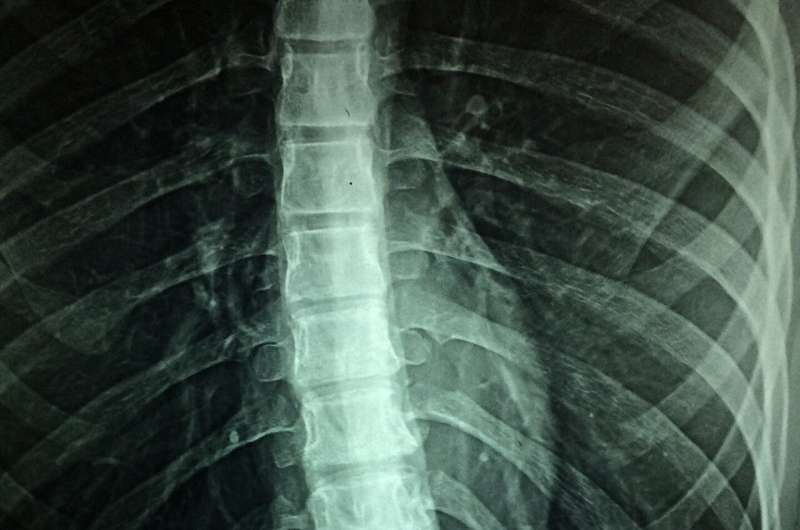This article has been reviewed according to Science X's editorial process and policies. Editors have highlighted the following attributes while ensuring the content's credibility:
fact-checked
peer-reviewed publication
trusted source
proofread
Spinal cord stimulation shown to reduce pain, improve balance in people with lower limb amputation

Spinal cord stimulation can elicit sensation in the missing foot and alleviate phantom limb pain in people with lower limb amputations, University of Pittsburgh School of Medicine rehabilitation scientists report today.
Pressure sensors on the insole of a prosthetic foot triggered electrical pulses that were then delivered to a participants' spinal cord. Researchers found that this sensory feedback also improved balance and gait stability. The proof-of-concept study was done in collaboration with Carnegie Mellon University and University of Chicago researchers and reported in Nature Biomedical Engineering.
"We are using electrodes and stimulation devices that are already frequently used in the clinic and that physicians know how to implant," said senior author Lee Fisher, Ph.D., associate professor of physical medicine and rehabilitation at Pitt. "We are leveraging those technologies to produce meaningful improvement in function and reduction of pain. That's exciting and we've been building it for a while."
Among 1.5 million Americans who live with lower-limb amputation, 8 out of 10 experience some degree of chronic pain perceived as though coming from the missing leg or foot. This phantom limb pain often does not respond to pain medications and dramatically impairs the quality of life. In addition, because even the most technically sophisticated prosthetics are not equipped with sensory feedback functionality, amputees remain prone to balance deficits and falls, which limit their mobility even further.
Unlike the typical stimulation system that works by shutting down pain neurons by overriding them with another sensory signal—similar to how rubbing your sore elbow helps relieve the pain—Fisher's group leveraged the existing spinal cord stimulation technology to restore sensory feedback by replacing the severed connections between sensory neurons in the missing foot and the central nervous system.
To enable researchers to modulate the intensity of sensations in response to varying pressure on a prosthetic foot during walking, a pair of thin electrode strands implanted over the top of the spinal cord in the lower back was connected to a cell phone-sized stimulation device delivering electric pulses of varying amplitude and frequency. The leads were implanted for one to three months and removed after the trial ended, in accordance with the study design.
Unlike previous research done by other groups, Fisher and team were able to exert active control of spinal cord stimulation parameters to control stimulation in real-time while subjects engaged their prosthetic leg to stand or walk.
In addition to clinically meaningful improvement in balance control and gait even in the most challenging conditions, such as standing on a moving platform with eyes closed, participants reported an average 70% reduction in phantom limb pain—a highly meaningful outcome given the lack of clinically available treatment options.
The beauty of this technology lies in its versatility: the pilot study showed that it can work in people with extensive peripheral nerve damage due to chronic conditions, such as diabetes, or in people with traumatic amputations. It also doesn't require costly custom-made electrodes or uncommon surgical procedures, making it easier to scale up on a national level.
"We are able to produce sensations as long as the spinal cord is intact," said Fisher. "Our approach has the potential to become an important intervention for lower-limb amputation and, with proper support from industry partners, translated into the clinic in the next five years."
More information: Spinal cord stimulation can restore sensation, improve function, and reduce phantom limb pain after transtibial amputation, Nature Biomedical Engineering (2023). DOI: 10.1038/s41551-023-01153-8. www.nature.com/articles/s41551-023-01153-8
















